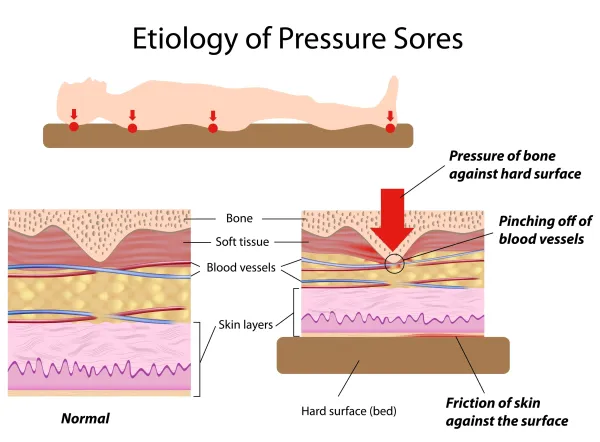Fine-Tune Your EGD Coding Skillset Using This Clinical Example

Pinpoint the differences between each code by using these pointers. When it comes to endoscopy coding, most outpatient facility and ambulatory surgery center (ASC) gastrointestinal (GI) coders are adept at identifying the correct code range for esophagogastroduodenoscopy (EGD) services, but differentiating the right code from the broad list of options can be challenging. While merely understanding the basics of this code set can be challenging, putting them into practice via your surgeon’s operative report can be especially difficult. Utilize this sample operative note and subsequent tips to increase your odds of EGD coding success. Analyze and Evaluate this EGD Operative Report Operative report: Informed consent was obtained. The patient was carefully premedicated with a total of 5 mg of Versed intravenously given in careful titration prior to and during the procedure. The adult fiberoptic gastroscope was passed into the esophagus under direct vision without complications. All areas were carefully examined. The esophagus appeared normal. The GE junction was at approximately 40 cm. There was no endoscopic evidence of Barrett’s esophagus. Multiple 4-quadrant biopsies were obtained. The stomach was examined next. There were superficial ulcerations of the antrum consistent with NSAID ulcerations. Multiple biopsies were obtained. The body of the stomach was normal and retroflexion showed a normal cardia and fundus. Biopsies of the antrum and body of the stomach were obtained for CLO test to assess for H. pylori. The duodenal bulb was normal and the second portion of the duodenum was also normal. The patient tolerated the procedure well without complications. Evaluate 3 Factors in Note When coding an upper GI endoscopy, make sure you consider these three factors: 1. How far your gastroenterologist went with the scope (e.g., to the esophagus, stomach, or duodenum). 2. If the physician performed any biopsies or polyp removal, and what technique was used (i.e., cold biopsy, hot biopsy, or snare). 3. The type of dilator your physician uses (if dilation is performed at all). In this case, the op note clearly states that she examined the patient for signs of Barrett’s esophagus (K22.70 or K22.71-, Barrett’s esophagus…), and took biopsies; examined the stomach, and took biopsies; before she finally examined the duodenum. Thus, you should report the procedure with 43239 (Esophagogastroduodenoscopy, flexible, transoral; with biopsy, single or multiple). If the physician only examined the esophagus, you would choose from the esophagus endoscopy code set. Profit: If the procedure was performed in the facility outpatient setting, the national base rate reimbursement for your claim using 43239 under the Outpatient Prospective Payment System (OPPS) is $743.49. In an ambulatory surgical center (ASC), per CMS Addendum AA, you’d collect $387.30 for the service. Report the primary diagnosis with K25.9 (Gastric ulcer, unspecified as acute or chronic, without hemorrhage or perforation). If you know from the history what medicine the patient used prior to the procedure, you may add Z79.1 (Long-term [current] use of non-steroidal anti-inflammatories [NSAID]) as secondary diagnosis. Never Disregard Biopsy, Polyp Treatment During EGD It’s important that you are aware of what your gastroenterologist did while performing the EGD on the patient. With biopsies, for instance, keep in mind that, no matter how many biopsies a physician takes during the endoscopy, you can only code one procedure (43239 in this case). However, an exception allows you to bill 43238 (Esophagogastroduodenoscopy, flexible, transoral; with transendoscopic ultrasound-guided intramural or transmural fine needle aspiration/biopsy[s], [includes endoscopic ultrasound examination limited to the esophagus, stomach or duodenum, and adjacent structures]) if the physician also performed biopsies using ultrasound-guided aspiration on a separate anatomical site. Careful: Don’t mistake collection of samples from performing a biopsy. Physicians sometimes collect samples of fluid or superficial tissue cells (or cytology brushings) during an EGD. This service is included in the base procedure 43235 (Esophagogastroduodenoscopy, flexible, transoral; diagnostic, including collection of specimen[s] by brushing or washing, when performed [separate procedure]). “The specific terms to look for in 43235 are ‘brushing’ and ‘washing,’” says Stephan Tong, CPC, COC, revenue cycle management freelancer at stongrcm.com. If there is no mention of the use of cold forceps or that a biopsy was done, then this should lead you to selecting 43235. If the terms “(cold) forceps” or “biopsy” are present, then select 43239,” Tong emphasizes. Sometimes the physician will treat polyps or other lesions during an EGD. You have three CPT® codes to choose from for lesion removals: You can only code one EGD with lesion removal. However, if the physician treats different lesions with different procedures, you could append a modifier such as 59 (Distinct procedural service) to the column 2 code to break the bundle as long as the documentation supports it and the National Correct Coding Initiative (NCCI) edits allow for it.




